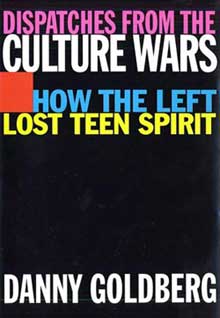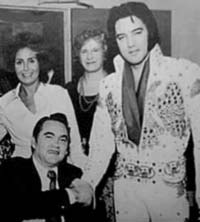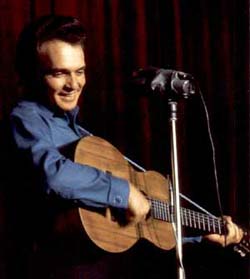
Usually a subtitle does work the main title does not—better outlining a book’s contents. However, the split title of Danny Goldberg’s Dispatches from the Culture Wars: How the Left Lost Teen Spirit reflects the book’s split nature. It is mostly a memoir of Goldberg’s experience as a record executive, officer of the American Civil Liberties Union (ACLU), and progressive activist. He recounts how he entered the music business as a reporter in the late 1960s, became politicized in response to the Parents’ Music Resource Center’s (PMRC) attacks on popular culture in the mid 1980s, and was led into relationships with Democratic politicians (including Gary Hart, Jesse Jackson, and Al Gore). While Goldberg’s “dispatches” are a good read for those interested in the history of both the music business and politics, they are overshadowed by the parts of the book identified in its subtitle. In examining How the Left Lost Teen Spirit, Goldberg constructs a passionate critique of the Democratic Party and the American Left and its dysfunctional relationship with popular culture. He exhorts Democrats to embrace their progressive heritage and to reconnect with sympathetic voters through popular culture.
His reflections challenge those of us who study popular music to develop a politically engaged music criticism. Helping politicians understand popular culture provides them with a valuable resource for more effectively communicating with voters, many of whom pay more attention to entertainment than news. More importantly, interpreting the cultural debates that take place in entertainment can assist politicians in being more truly representative of their constituents. This in turn enables them to translate the values voters embrace in popular culture into policies they can enact in the voting booth.
In Goldberg’s view, the gulf between liberal politicians and popular culture has created a paradoxical situation for the Democrats. Why, he asks, at a time when he believes “virtually every cultural battle in America has been won by the left … abortion rights, free speech, gay and lesbian rights, and racial equality,” has the Democratic Party consistently lost electoral ground (2)? Even more perplexing, why have many leading politicians affiliated themselves with the cultural right in an effort to regain it? Goldberg first confronted this situation while combating Tipper Gore’s PMRC campaign against representations of violence, sex, and the like. Since then, many in the Democratic Party have either felt it necessary to distance themselves from a culture they see as a liability, or found it expedient to attack it. Goldberg feels this has created an unnecessarily antagonistic relationship between Democratic politicians and allies in the world of entertainment, and, more importantly, it has alienated young voters whom he sees as their natural constituency.
Goldberg blames two forces within the Democratic Party for the current situation: the “liberal snobs” and the “tone-deaf mavens.” Liberal snobs, here epitomized by Connecticut senator Joe Lieberman, condemn popular culture for its immorality and its effect on America’s youth. While they are often allied with a group he identifies as “cultural conservatives” (such as Jerry Falwell), Goldberg believes they differ in key ways. While liberal snobs agree that violence is a major pollutant of popular culture, they are more appalled at bigotry (especially misogyny and homophobia) than open sexuality. Moreover, the two groups differ on the cultural history of the 20th century. Cultural conservatives tell a story in which the moral zenith of the 1950s was undermined by the degenerate cultural elements planted by the beatniks and cultivated by the late-1960s counterculture. Liberal snobs, however, remember the popular culture of their 1960s youth as a positive force that soured after they matured.
While liberal snobs push away young Americans by attacking the music they love, Goldberg argues that “tone-deaf mavens” miss culture’s motivational power. These are the “self-insulated consultants and pundits … [whose] snobbery and insensitivity to young people have created a Democratic party [sic] and a public-interest left whose leaders appear unwilling or unable to communicate with the ‘unwashed’ masses.” In addition to losing votes, this arrogant blindness creates a paradox for a party that believes it stands up for average Americans because it disconnects “progressive political leaders [from] the culture of the people they want to lead” (11).
For Goldberg, the chasm between the political Left and popular culture began to open in the ‘60s. “Political activists don’t always respect or understand artists, even politically committed artists,” he learned from witnessing events such as The Who’s Pete Townsend assaulting Abbie Hoffman when he interrupted the band’s set at Woodstock to make a political speech. “[T]he resulting failure to communicate,” he asserts, “has haunted progressive American politics since the sixties” (47). Goldberg continues that the way the 1960s themselves Democratic candidates has widened this rift, as politicians try to distance themselves from what the decade has come to represent. He believes that the “conventional wisdom” that “sixties protestors … too many women, blacks, gays, longhairs, and showbiz types” led to the Party’s meltdown in the late 1960s has misled Democratic leaders into abandoning their core constituencies. Those who embrace the era’s cultural movements are left “torn between choosing the lesser of two evils, supporting third parties, or joining the vast and growing ranks of those who simply don’t vote” (19-20).
Much of Goldberg’s discussion of “how the left lost teen spirit” is illuminating and impassioned, creating the expectation that he will provide concrete suggestions on how Democrats could use popular culture to reach young voters. Unfortunately, he does not clearly translate the lessons learned from his experiences into useable strategy. Extrapolating from his experience with political campaigns and public education efforts (such as MTV’s Rock the Vote), he seems to believe that popular music is primarily useful because it has the ears of young America and its celebrities can bring attention to progressive causes. Yet Goldberg clearly has a broader view of music’s political power. In discussing the formation of his musical-political consciousness in the late 1960s, he describes how the music that held pride-of-place in his high school record collection—Phil Ochs, the Beatles, the Rolling Stones, and Jimi Hendrix—had “the visceral power” to make tangible a sense of community united by shared beliefs and provide an emotional link between the personal and the political for him. Bob Dylan’s music was particularly powerful. “I could immediately bond with a stranger who quoted key Dylan lyrics intelligently,” Goldberg remarks, and recounts being unexpectedly pulled aside by a high school classmate whose excitement about Dylan’s “Ballad of a Thin Man” demanded that he share it with someone right away. The musical power of such songs brought listeners together in a shared social consciousness.

But although Goldberg has a complex understanding of music’s power and has repeatedly succeeded in capturing the imagination of America’s youth (managing bands ranging from Led Zepplin to Nirvana), George Wallace (seated) and Elvis Presleyhis personalized perspective of the history he discusses hinders his ability to offer political solutions for the present. Like the politicians he criticizes, Goldberg’s interpretation of the 1960s and its social movements blind him to the decade’s cultural legacy. Though correct in castigating politicians for being spooked by the ghosts of the decade’s radicals, one of the most prominent specters haunting the politics of culture do not appear in this narrative: Alabama’s Democratic governor, George Wallace. The segregationist demagogue made nationally (in)famous by his “Segregation Forever” pledge and his “Stand in the School House Door” to prevent the integration of the University of Alabama, created a political shockwave with his presidential bids in ’68 and ’72. Both campaigns were built around anger towards African Americans, anti-war activists, and the counterculture. His message won him electoral votes in the South, as well as large numbers of votes from working-class whites, unionized workers, and first-generation suburbanites outside the region. Wallace’s campaigns broke loose many of the Democrats’ core constituencies, benefiting Republicans who were later able to use the social issues Wallace campaigned on to effect an electoral realignment.

Popular culture was deeply implicated in this shift. The same music that provided the Merle Haggardlink between young people and progressive politics for Goldberg angered many of these formerly-Democratic voters. In the music Goldberg writes about, these Americans heard a romanticization of drug use (Jefferson Airplane’s “White Rabbit”), a contempt for hard work, a disrespect for traditional sources of authority (Phil Ochs’s “I’m Gonna Say It Now”), and a rejection of gender and sexual norms that outraged many. This anger found its own voice in the rapidly expanding genre of country music, most famously in Merle Haggard’s “Okie from Muskogee” and “The Fighting Side of Me,” which took aim directly at the pop culture associated with the Left as well as its activism.1
Simultaneously, youth culture was becoming more fragmented than at any time since the early 1950s (prior to rock and roll), reducing the cultural opportunities for political coalition building. The 1950s and early 1960s produced acts like Chuck Berry, Elvis Presley, and the Supremes that brought audiences together not only across racial lines but regional and class barriers as well. The rock of the late 1960s that Goldberg idealizes was the product of a dramatically resegregated environment. The deaths of Hendrix and Otis Redding left Sly Stone as the only black superstar in rock music, who ultimately despaired at the seeming impossibility of an integrated society.
In ending his book, Goldberg invokes one of Bob Dylan’s most legendary lines to emphasize how urgently the Democratic Party needs to change: “You better start swimming or you’ll sink like a stone, for the times are a changin’.” Yet this line is only half-applicable to the present. It may very well be sink-or-swim time for the Democratic Party, but the times haven’t changed that much. The cultural fragmentation of the late 1960s remains largely in place today, and the Democrats have yet to figure out what constituencies they represent.2 Social issues—including gay rights, abortion, and religion—continue to divide Democrats from the voters they believe they are fighting for: those who have not benefited from the country’s prosperity. Additionally, there is a lagging commitment within the Democratic Party to address the thorny issues of economic injustice in which racial inequality remains entrenched. (In contrast to Goldberg’s rosy view of progressive victories in these domains, it seems to me that it is far too early to declare “mission accomplished.” ) It is not just ambivalence that accounts for the Democrats’ dysfunctional relationship with popular culture. Social issues continue to be the focus of profound political struggle, and popular culture a terrain on which these battles are often fought.
I share Goldberg’s belief that the Democratic Party must do a better job reaching young voters, and he is correct to call upon its leaders to pay attention to popular culture in order to do this. But this is not simply a matter of figuring out what kids like and embracing it. It requires a fundamental grappling with what the Democratic Party stands for, on the one hand, and a deeper understanding of what popular culture means to its audience, on the other. Popular music is most politically effective when its ideological implications coincide with concrete political goals. The political dimensions of our current social conflicts do not translate easily into a cultural form. Harnessing music’s electoral potential—getting people to vote for candidates who stand for certain things—is especially difficult at a time when popular music remains divisive and constituencies divided.
- Haggard’s articulation of this viewpoint is especially significant, given that his much of his other work remain among the most powerful class critiques found in ‘60s and ‘70s popular culture representing the ideas the Democrats believed themselves to be fighting for. ↩
- Though hip hop has perhaps brought white and black teens back into a single listening community, the terms by which well-off whites are appropriating working-class black culture—with its strong roots in minstrelsy—perhaps inhibit meaning coalition building as much as the music might aid it. ↩
